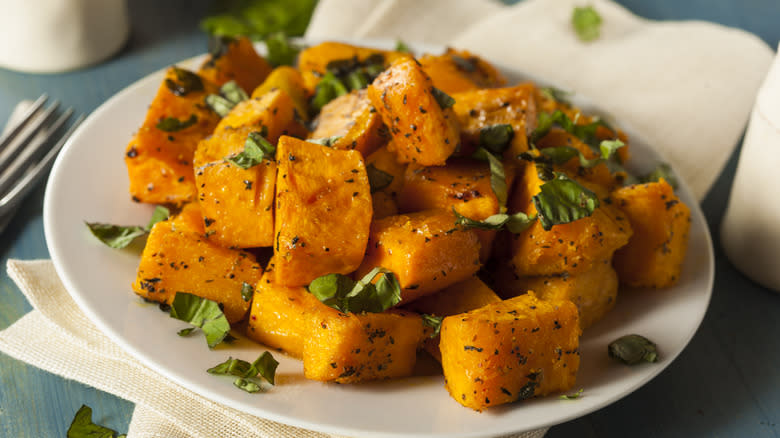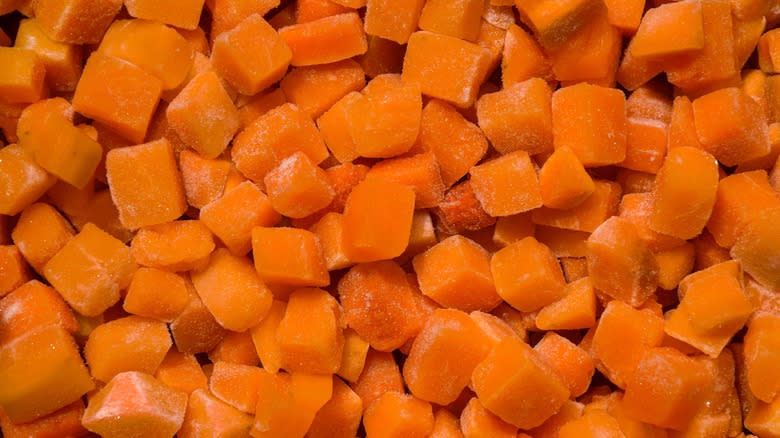Why Cubed Butternut Squash Needs To Be A Staple In Your Freezer

When the autumn leaves begin to fall, it's time to turn your attention to squash recipes. But as tasty and versatile as butternut squash can be, it can be tricky and time-consuming to actually cut it up yourself. The skin is difficult to peel and the flesh can be hard to slice through, so the whole process can be tough even if you're using a sharp knife. And unless you can hold your fruit steady on your cutting board, it can even be a little dangerous to maneuver your way to butternut squash cubes.
The solution? Buy your fruits frozen and pre-cut. That way, you can skip straight through all the muscle work of peeling and cutting your squash, and get right to the good stuff. Because fruits and veggies are typically frozen at the peak of freshness, you won't be sacrificing any flavor by opting for a bag out of the freezer, and nor will you let go of any health benefits either. According to the American Frozen Food Institute, studies show the nutritional benefits of frozen fruits and vegetables are either greater than or equal to the fresh versions.
Read more: 30 Popular Frozen Pizzas, Ranked Worst To Best
How To Use Frozen Butternut Squash

If you've snagged a bag of frozen, cubed butternut squash, here's how to use it. First, make sure you have a package that contains just butternut and nothing else (i.e. no sauces or seasonings, unless you'd like the latter). In most cases, you don't even have to thaw the squash first -- if you're deploying it as a fall smoothie ingredient alongside almond butter, chai concentrate, banana, and cinnamon, for example. But even if you want roasted butternut squash, you can pretty much throw it straight on the sheet pan and into the oven. You'll just want to separate any chunks that are stuck together beforehand and toss them with olive oil and your choice of seasonings, just like you would with fresh cubes. Savory flavor options include garlic powder, onion powder, chili powder, and plain old salt and pepper, or you can go with brown sugar, cinnamon, and honey for a sweeter version.
To avoid mushy fruits, keep your butternut squash in the freezer while your oven preheats, and only prep it when you're ready to roast to avoid any thawing on the counter. Then bake it for about 20 minutes at 450 degrees Fahrenheit, stirring halfway through, or air fry it for 20 minutes at 400 degrees Fahrenheit. You'll have ready-to-eat butternut squash in under half an hour, no peeling or slicing required.
Read the original article on Tasting Table.

